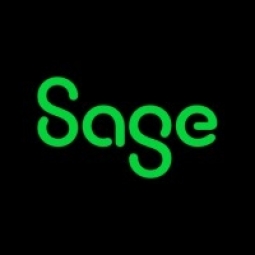Download PDF
CFM Heats Up E-Business With Sage 100 ERP
Technology Category
- Functional Applications - Enterprise Resource Planning Systems (ERP)
Applicable Industries
- Electronics
Applicable Functions
- Business Operation
- Sales & Marketing
Use Cases
- Inventory Management
- Supply Chain Visibility
Services
- System Integration
The Challenge
CFM Equipment Distributors, Inc., a HVAC wholesaler based in Sacramento, California, was looking to expand its business without adding staff in customer service. The company wanted to leverage e-commerce to achieve this goal. They needed a solution that would allow their customers to check real-time inventory across their warehouses and place orders online. The company was also looking for a solution that was easy to implement and use.
About The Customer
CFM Equipment Distributors, Inc. is a HVAC wholesaler based in Sacramento, California. The company operates two warehouses and is planning to open a third one. CFM has a total of 38 employees. The company was looking to expand its business without adding more staff in customer service. To achieve this, CFM decided to leverage e-commerce and needed a solution that would allow their customers to check real-time inventory across their warehouses and place orders online.
The Solution
CFM implemented Sage 100 ERP with a full complement of e-commerce modules including e-Business Manager, .inquiry, .order, and Credit Card Processing. The Sage 100 ERP real-time inventory system allows customers to check whether the HVAC equipment is in stock in CFM’s warehouses. A customization to e-Business Manager provided by their reseller allows customers to see if an item is not in the warehouse closest to them, they can make a decision about ordering from CFM's other location. The implementation of e-commerce was surprisingly easy for CFM. The e-Business Manager was easy to plug in and use, and their customers found it easy to use as well.
Operational Impact
Quantitative Benefit
Related Case Studies.

Case Study
Remote Temperature Monitoring of Perishable Goods Saves Money
RMONI was facing temperature monitoring challenges in a cold chain business. A cold chain must be established and maintained to ensure goods have been properly refrigerated during every step of the process, making temperature monitoring a critical business function. Manual registration practice can be very costly, labor intensive and prone to mistakes.

Case Study
Cloud Solution for Energy Management Platform-Schneider Electric
Schneider Electric required a cloud solution for its energy management platform to manage high computational operations, which were essential for catering to client requirements. As the business involves storage and analysis of huge amounts of data, the company also needed a convenient and scalable storage solution to facilitate operations efficiently.

Case Study
Leveraging the IoT to Gain a Competitive Edge in International Competition
Many large manufacturers in and outside Japan are competing for larger market share in the same space, expecting a growing demand for projectors in the areas of entertainment, which requires glamor and strong visual performance as well as digital signage that can attract people’s attention. “It is becoming more and more difficult to differentiate ourselves with stand-alone hardware products,” says Kazuyuki Kitagawa, Director of Service & Support at Panasonic AVC Networks. “In order for Panasonic to grow market share and overall business, it is essential for us to develop solutions that deliver significant added value.” Panasonic believes projection failure and quality deterioration should never happen. This is what and has driven them to make their projectors IoT-enabled. More specifically, Panasonic has developed a system that collects data from projectors, visualizes detailed operational statuses, and predicts issues and address them before failure occurs. Their projectors are embedded with a variety of sensors that measure power supply, voltage, video input/ output signals, intake/exhaust air temperatures, cooling fan operations, and light bulb operating time. These sensors have been used to make the projector more intelligent, automatically suspending operation when the temperature rises excessively, and automatically switching light bulbs. Although this was a great first step, Panasonic projectors were still not equipped with any capability to send the data over a network.








